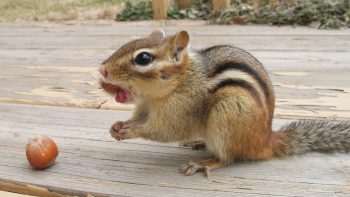Practice Dutch with these Tongue Twisters Posted by Karoly Molina on Jun 24, 2020 in Dutch Language
When you learn a new language, sometimes you have to teach your mouth and tongue to move in new ways to get the right pronunciation. Tongue twisters or tongbrekers are a fun way to practice and in this post, I want to share a few.
Knap de kapper
The first tongbreker is about a kapper or hairdresser named Knap who is also very knap or handsome.
Knap de knappe kapper
Knip en kapt heel knap
maar Knaap
de Knappe knecht van Knap
de knappe kapper knipt
en kapt nog knapper
dan Knap de knappe kapper
knip en kapt.
This particular tongbreker focuses on the pronunciation of the K and the P together, which in Dutch you pronounce together. You should also pay attention to the long and short vowels to distinguish what yo are saying. Knap has a short a, but Knaap has two a’s so these have to be elongated.
Some vocabulary to remember below:
kapper- hairdresser
knap– handsome
knecht– servant
knip– cut
kapt– chop
Kriebel de kat
This second tongbreker is about a cat named Kriebel and is short and to the point. How many times can you repeat it?
Kriebel de kat kruipt kriskras door de kelder.
Kribel (which also means tickles) the cat criss-crosses through he basement.
Potvis en een pispot
This one is about fish that pees on a chamber pot (those old fashioned peeing containers you get in hospitals when you are bed ridden).
Als een potvis in de pispot pist heb je een pispot vol met potvispis.
If a sperm whale pees in a chamber pot, you have a chamber pot full of pee from a sperm whale.
This one is kind of gross, but helps you practice the change from potvis to pispot. The vowels interchange making it easy to say it in the wrong order.
Leentje en Lotje
This one is about two girls, Leentje en Lotje, who are walking along a street.
Leentje leerde Lotje lopen langs de lange Lindelaan, maar toen Lotje niet wou lopen, liet Leentje Lotje staan.
Leentje taught Lotje to walk along the long road called Lindelaan, but when Lotje didn’t want to walk anymore, Leentje left her.
The L can be troublesome for language learners based on their native language because the curling of the tongue varies per language. This tongbreker helps you practice the L with all the vowels or klinkers.
Pieter Peeters and his garden
Pieter Peeters plant pietepeuterige peterselieplantjes in pimpelpaarse peperpotjes.
Pieter Peeters plants finicky parsley plants in bright purple pepper shakers.
In the Netherlands, you have variations of the name Peter: Peter (pronounced with an E and not how you normally would in English), Pieter which is pronounced like Peter in English, Piet and Pier.
Thijs and the slices
I think I will practice this one all week because it focuses on the differences between ij, e and ee.
Thijs snijdt de schijfjes steeds scheef!
Thijs always cuts the slices very crooked.
The carriage cleaner
If you have a carriage and a cat, the next tongbreker is very useful!
Als de poes van de postkoetskoetsier in de postkoets kotst, poetst de postkoetskoetsier zijn postkoets met postkoetspoets.
When the stagecoach driver’s cat pukes into the stagecoach, the stagecoach driver polishes his stagecoach with stagecoach.
Below are some more tongue twisters pronounced and explained! Which ones were the most difficult to say?
https://youtu.be/FS1fs4x1K6g

Build vocabulary, practice pronunciation, and more with Transparent Language Online. Available anytime, anywhere, on any device.





Comments:
Peter:
You have made a mistake in saying that you pronounce Peter (in Dutch) with an E as it should be with an A. Stating that you would not normally pronounce it with an E in English is a contradiction.
Karoly Molina:
@Peter Hi Peter, I think this highlights how difficult it is to explain pronunciation without phonetic symbols. You have left food for thought for future posts; I can perhaps use phonetic symbols or include a short recording of the pronunciation (or both)! Thank you for commenting 🙂 -Karoly